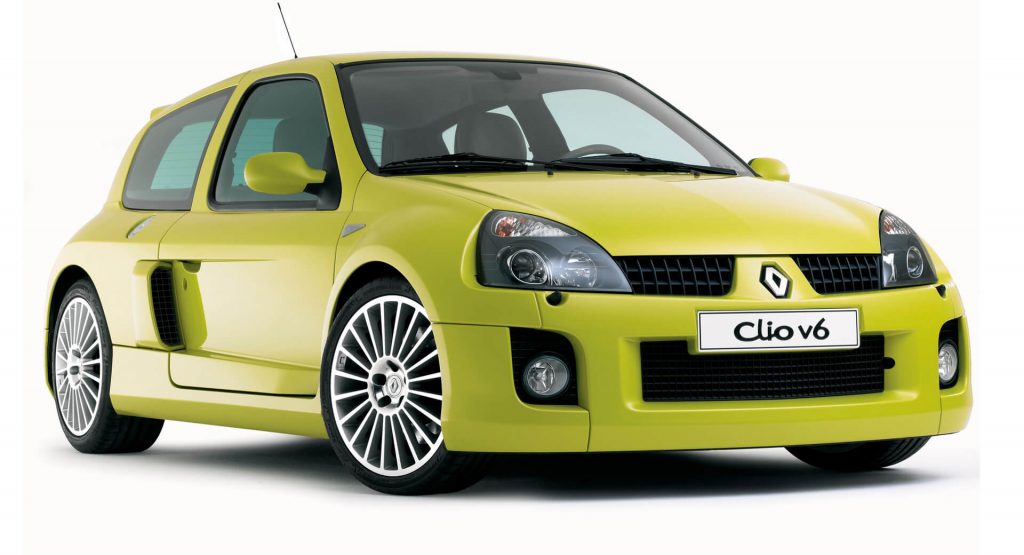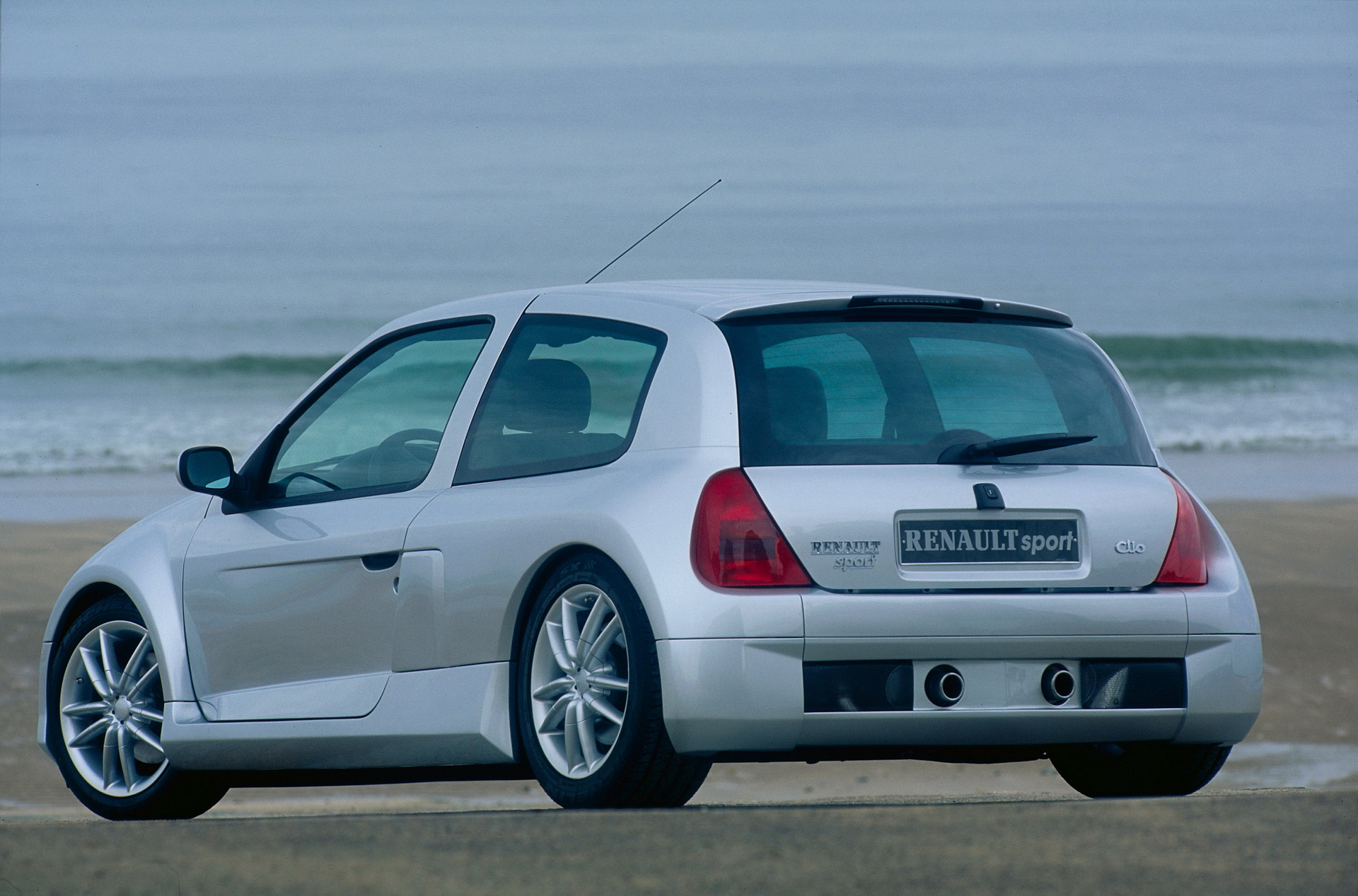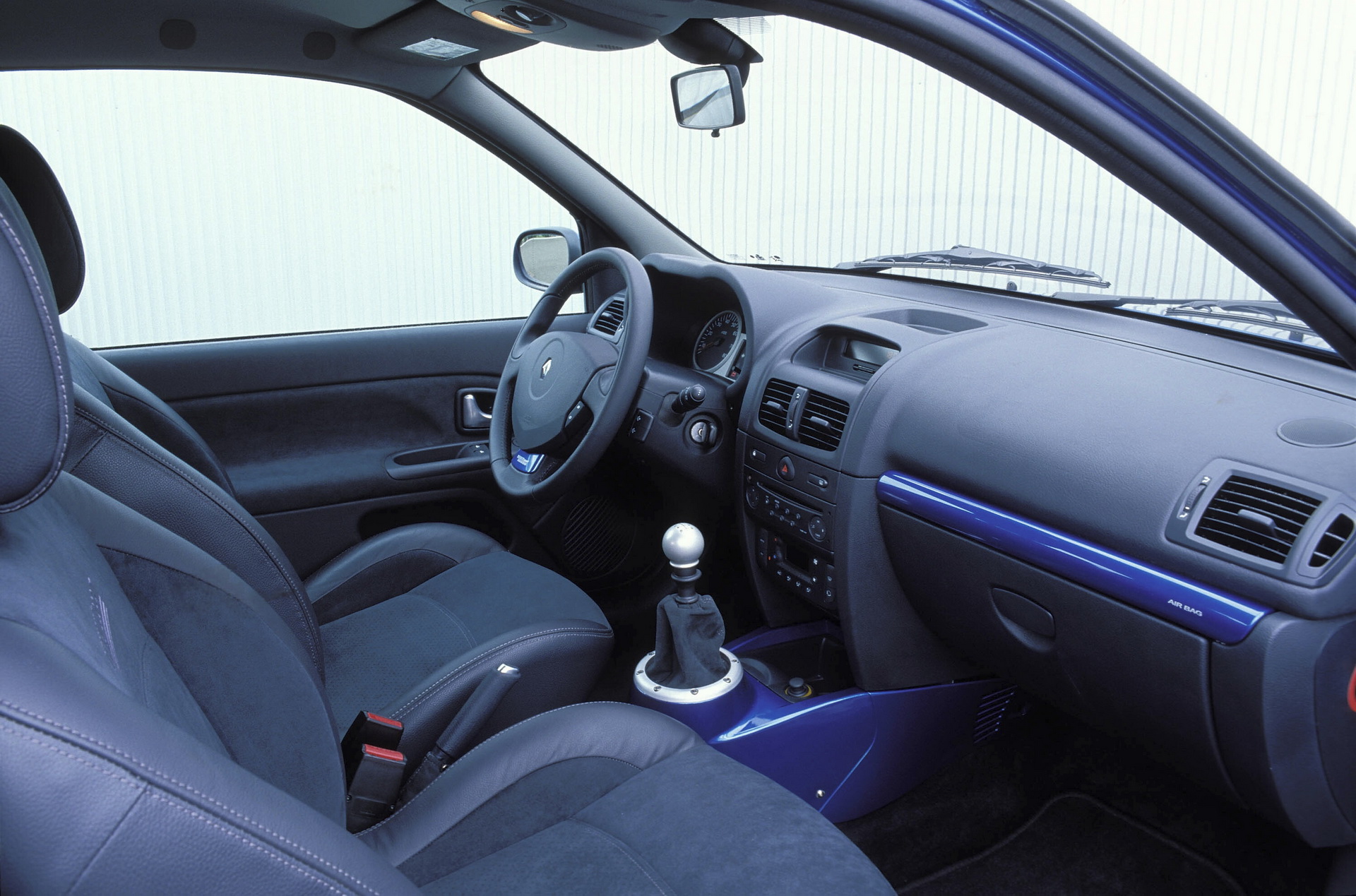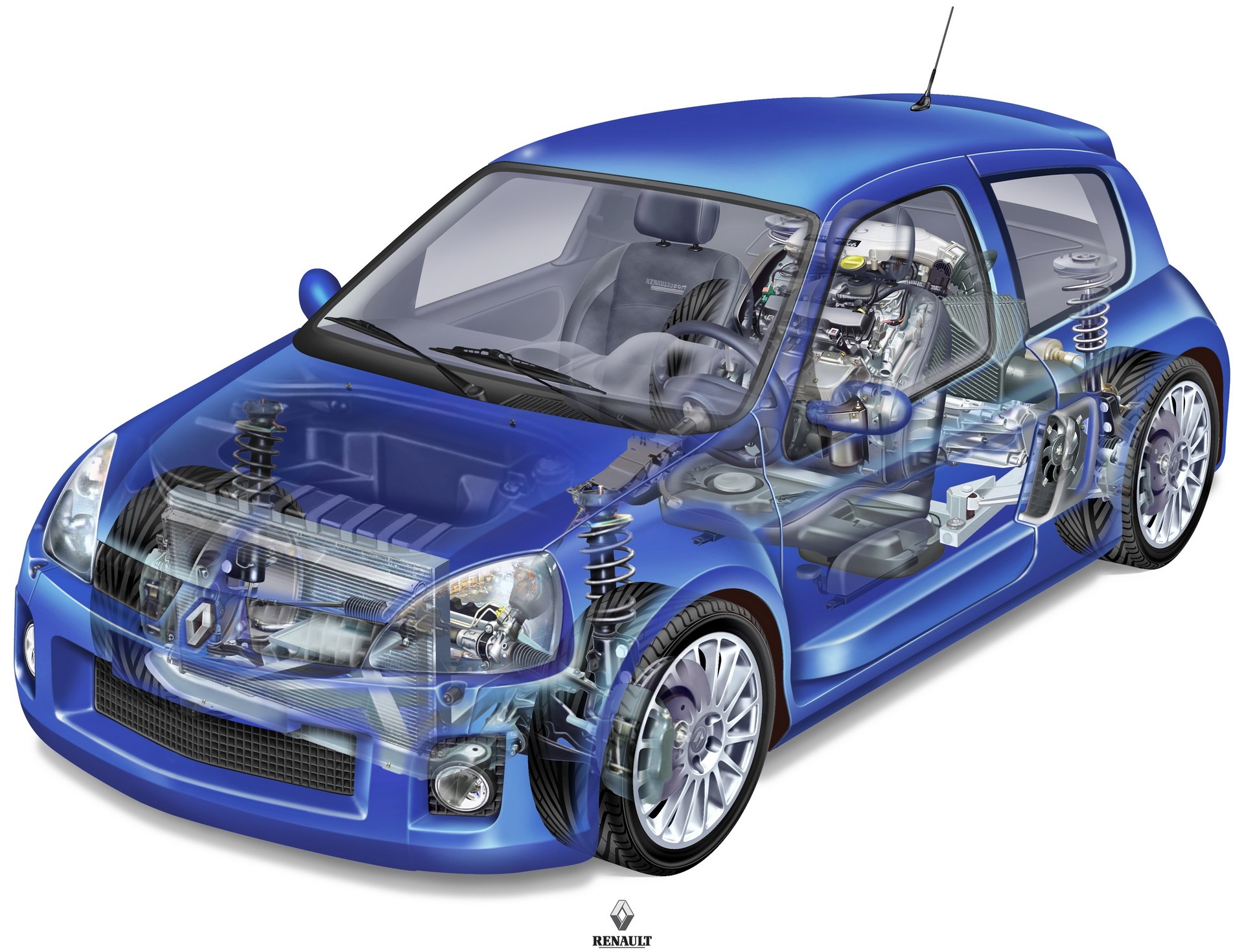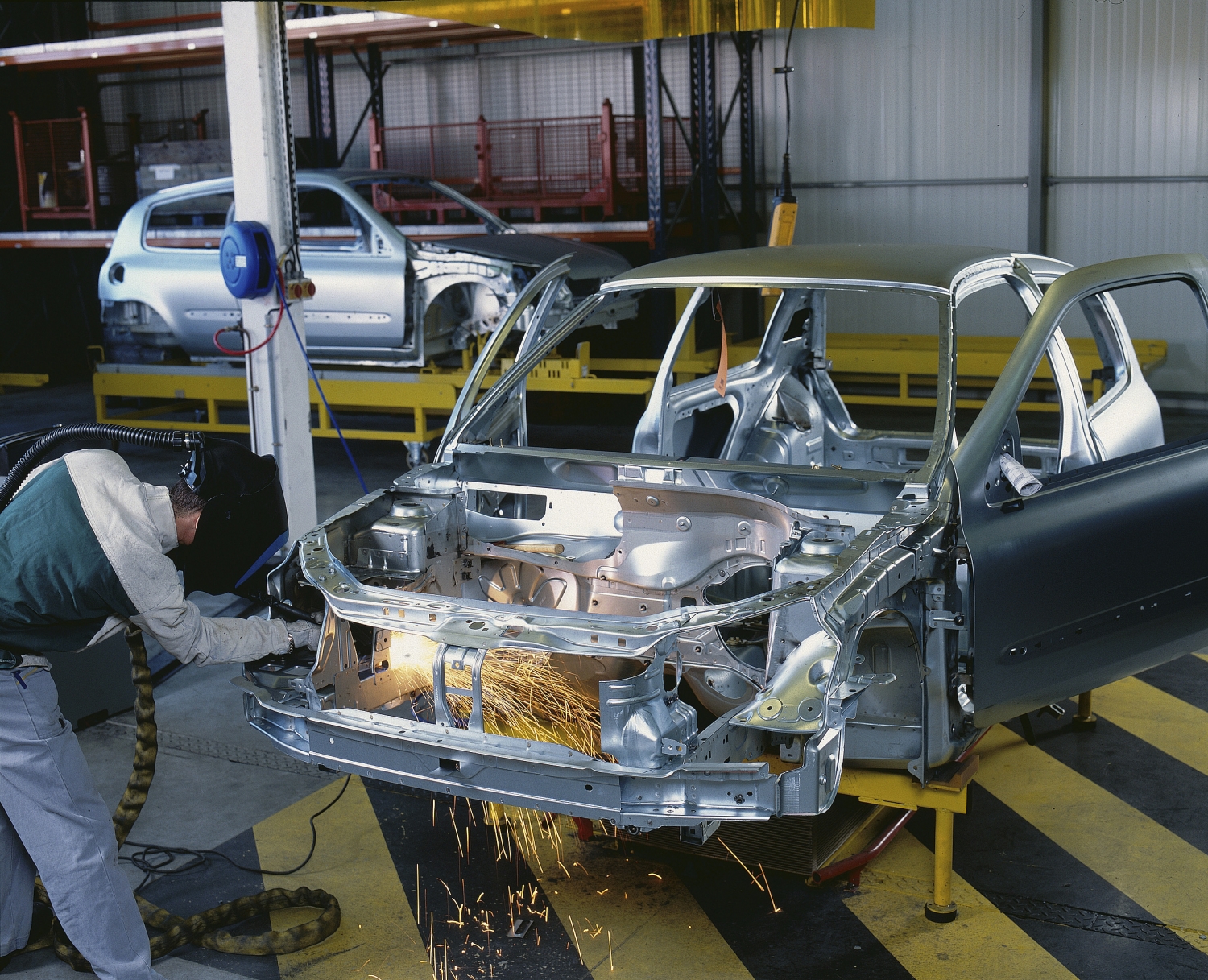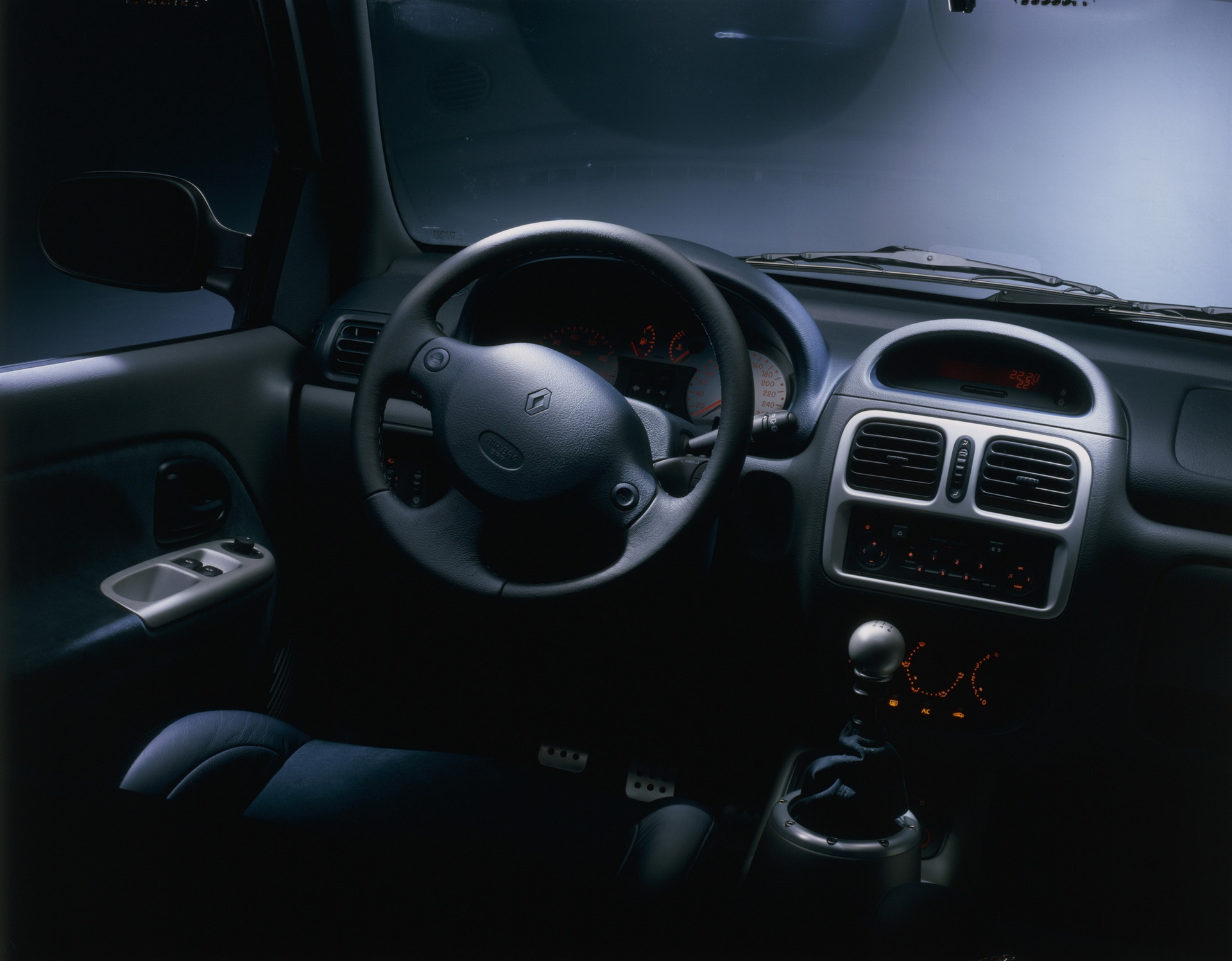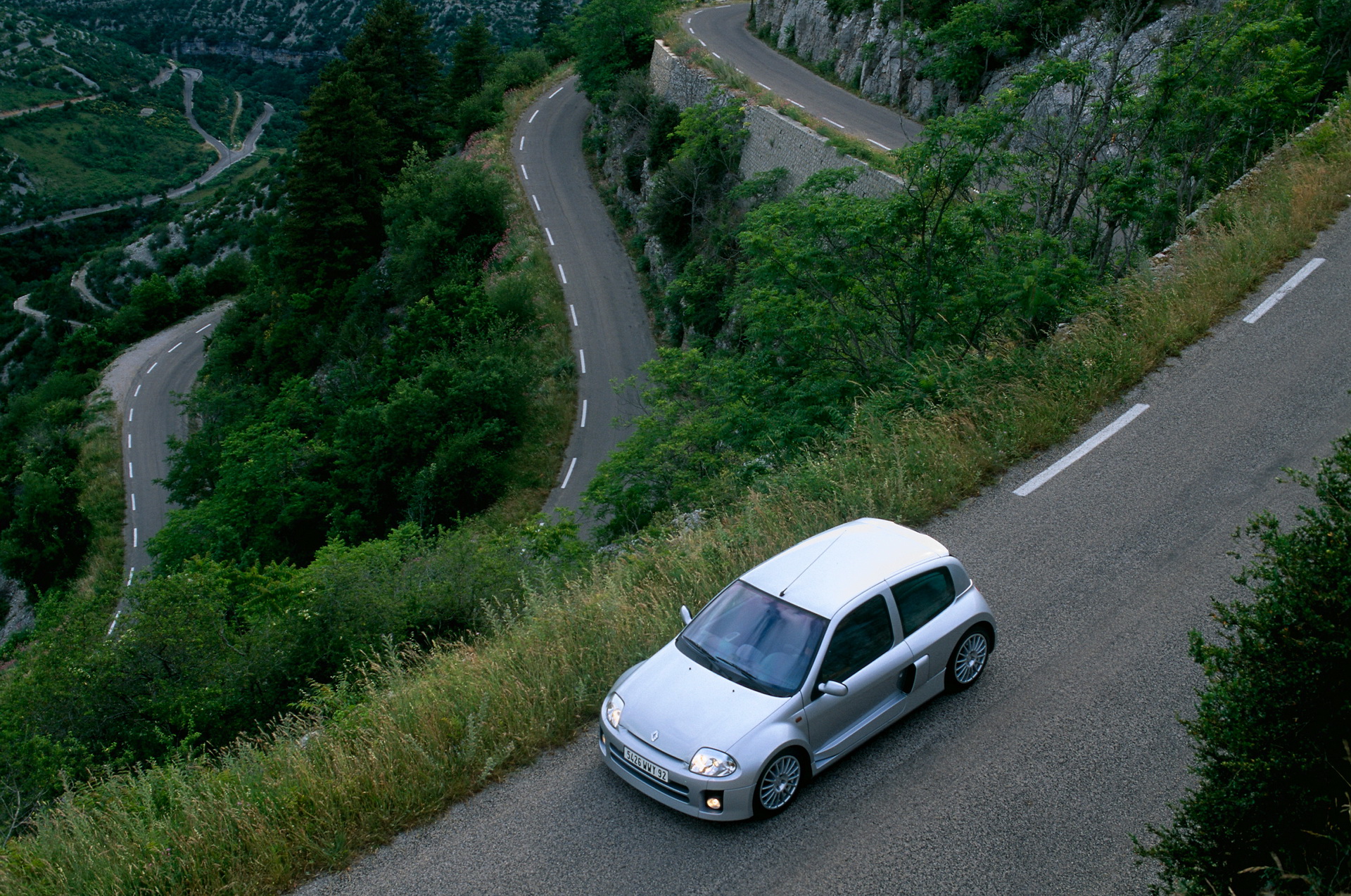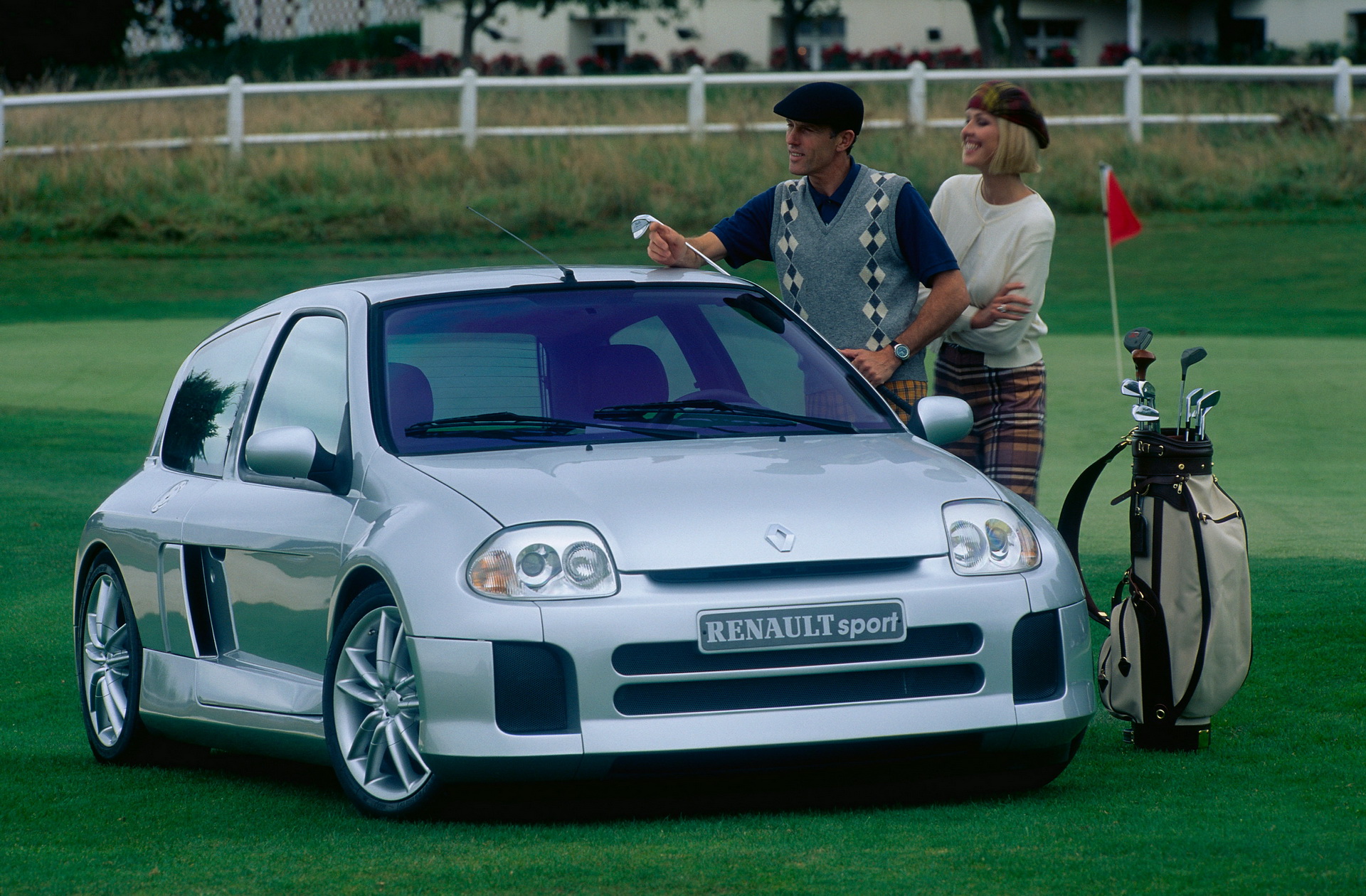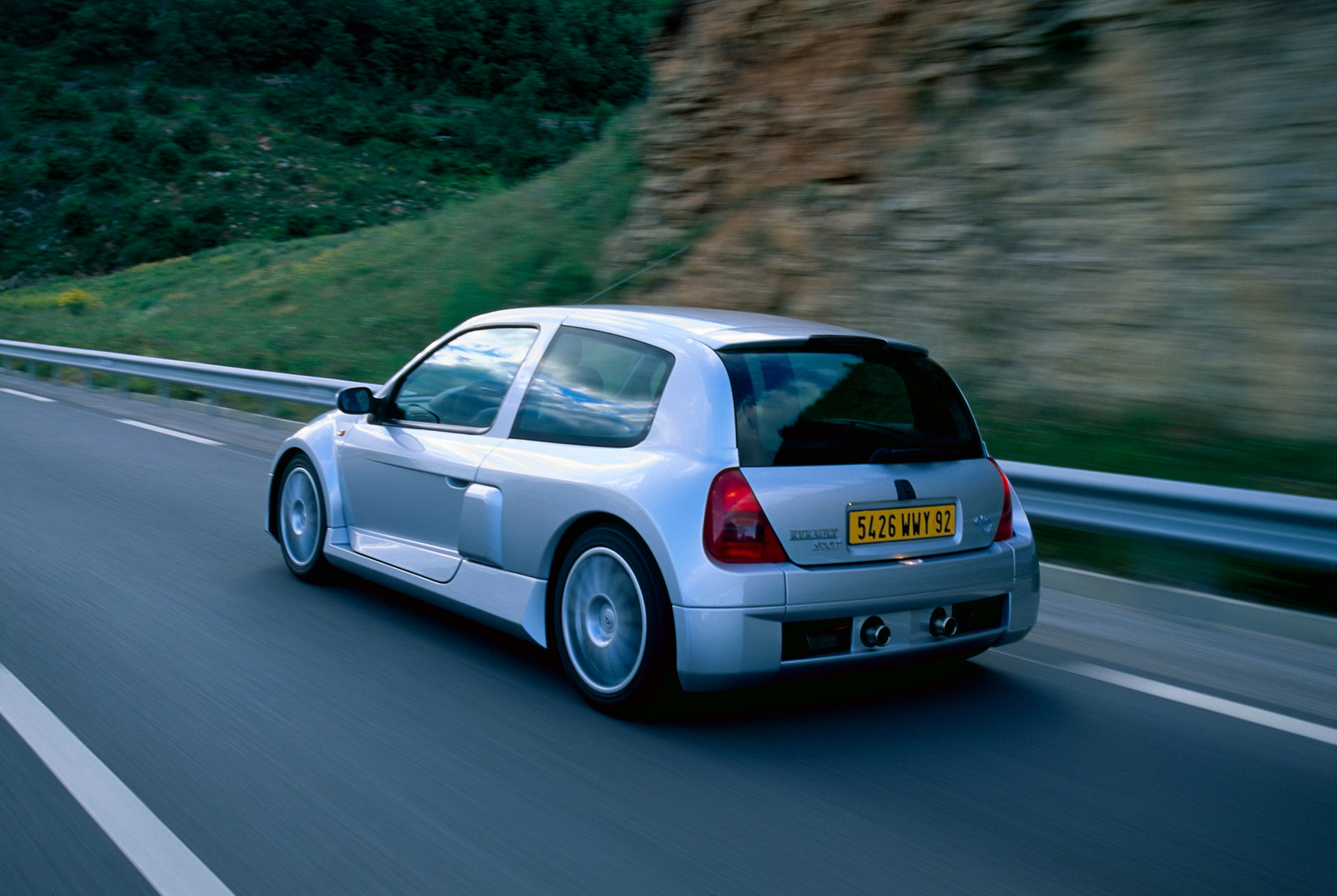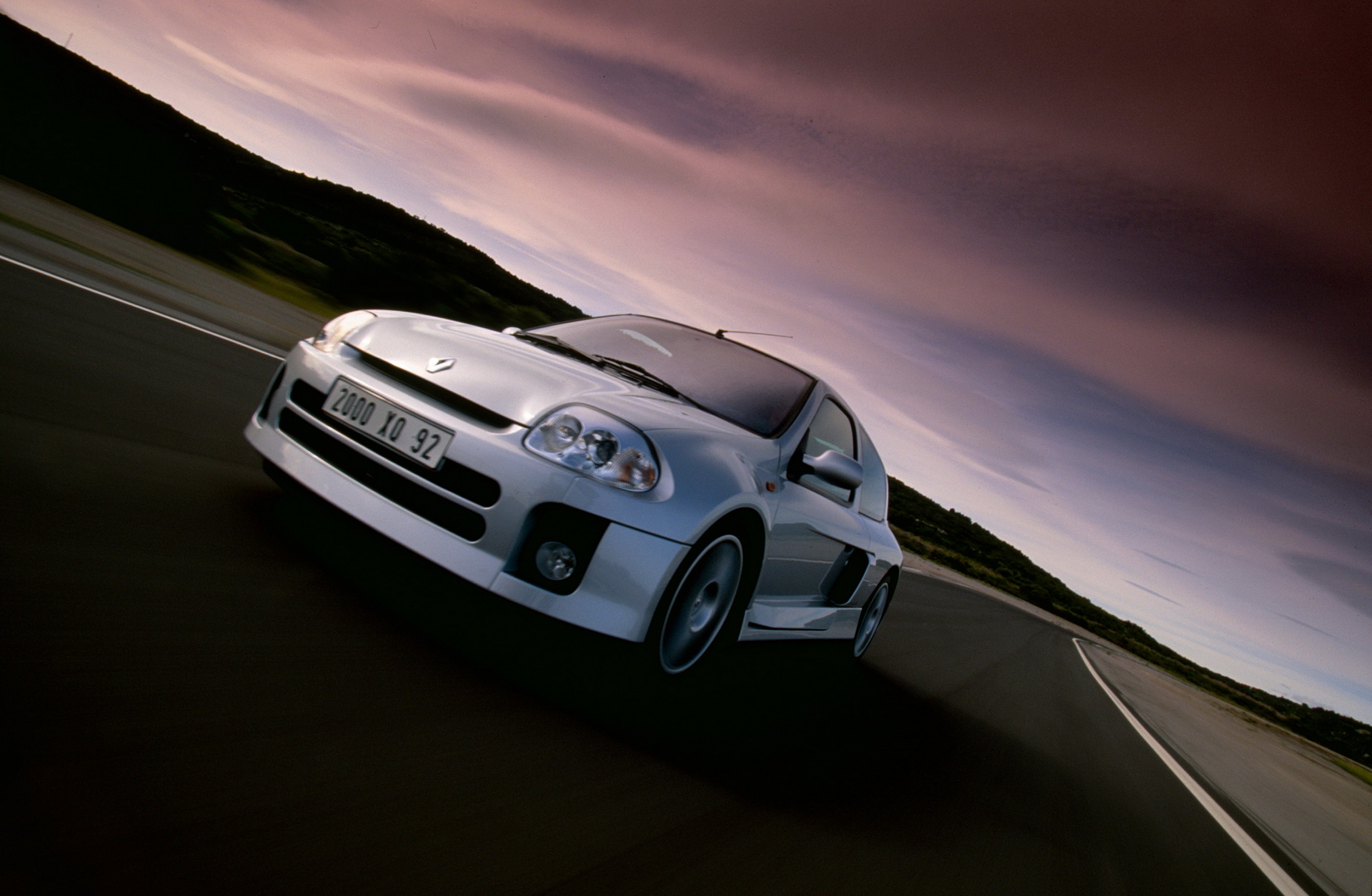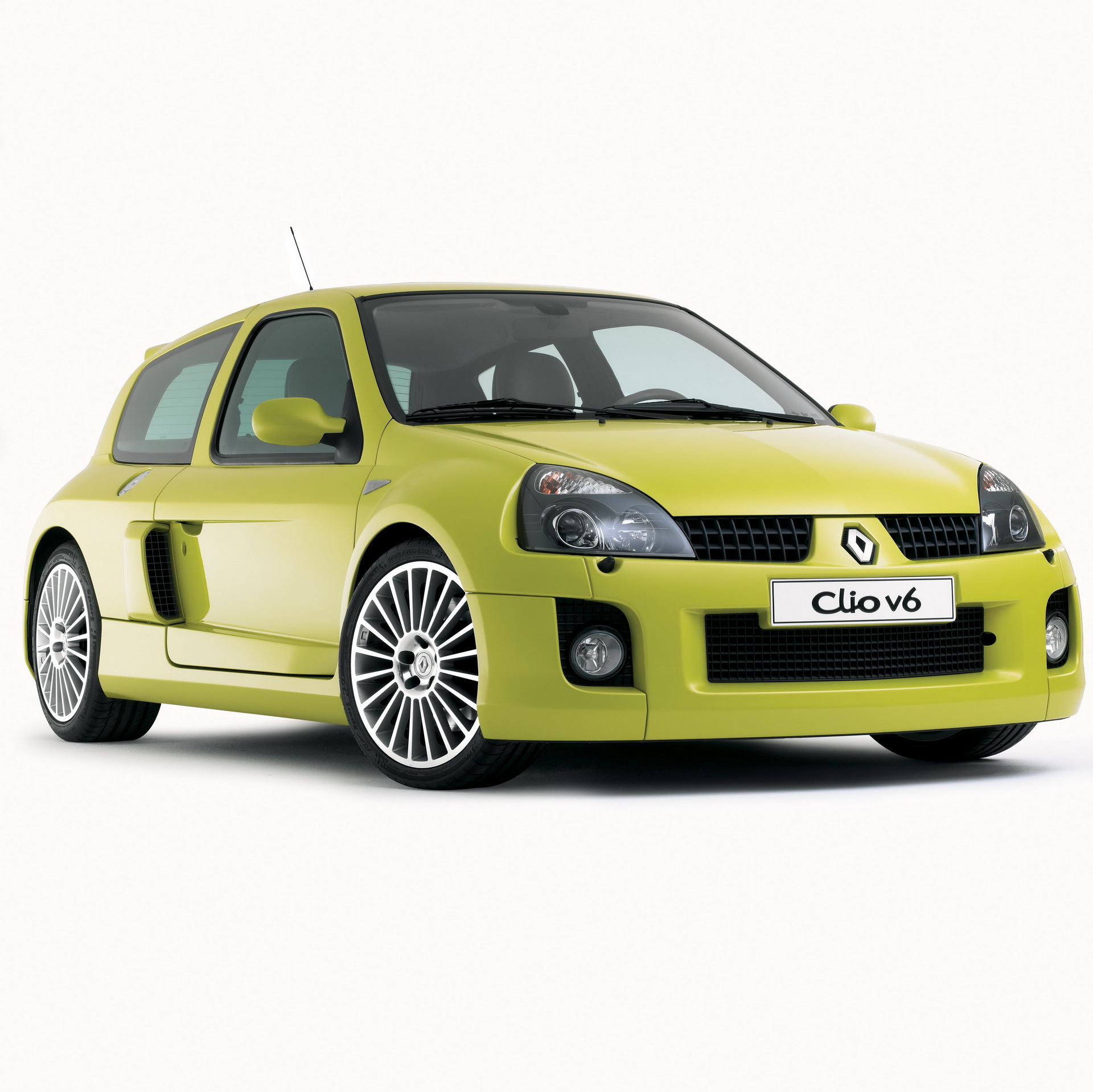Most of the time automakers prefer to play it safe, but once in a while someone takes a risk and launches something out of the ordinary. One of them was Renault, with the Clio V6.
Previewed by a concept at the 1998 Paris Motor Show and launched two years later, its existence was a direct result of the Clio V6 Trophy series and it had more in common with supercars than the Mk2 iteration of the subcompact hatchback, as it boasted a mid-engine, rear-wheel drive layout.
Remaining 98 percent faithful to the study, the ‘Phase 1’ Clio V6 packed a naturally aspirated 3.0-liter V6 in the middle. Sourced from the Laguna, the engine was modified with new pistons, increased compression ratio, enlarged inlet ports and a 7,100 rpm redline, and delivered 230 PS (227 HP / 169 kW) at 6,000 rpm and 300 Nm (221 lb-ft) at 4,650 rpm.
The six-speed manual transmission, which channeled the thrust to the rear wheels, was developed from a five-speed unit while a limited-slip differential was added to enhance traction. In a straight-line, it took 6.4 seconds to hit 100 km/h (62 mph) from a standstill, and could reach a 237 km/h (147 mph) top speed.
Being 171 mm (6.7 in) wider and 66 mm (2.6 in) lower than the regular Clio, with a 38 mm (1.5 in) longer wheelbase and increased front and rear tracks by 110 and 138 mm (4.3-5.4 in) respectively, the Clio V6 came with 17-inch OZ Superturismo wheels wrapped in 205/50 front and 235/45 rear tires.
Read Also: The Renault Clio Story – 30 Years Of The Popular French Supermini
Stopping power was provided by the AP Racing brakes with 330 mm (13 in) front and 300 mm (11.8 in) rear discs. The suspension was exclusive to this model, though the front anti-roll bar was taken from the Clio Trophy racer and the original front subframe was based on the Clio Renault Sport 172. Other exclusive parts included the front and rear bumpers, quarter panels and side sills, while the roof, tailgate, bonnet and shell were lifted from the Clio 172.
Due to its new layout, the Clio V6 wasn’t the most practical supermini out there, but it could still fit a small bag in the 67-liter (2.4 cu-ft) frunk, and another 45 liters (1.6 cu-ft) of stowage space were available behind the seats. It also came with leather and Alcantara trim, air conditioning, audio system and tinted windows.
All 1,631 units of the ‘Phase 1’, including 256 right-hand drive cars destined for the UK market, were built by Tom Walkinshaw Racing in Uddevalla, Sweden, but the ‘Phase 2’, which came out in 2003, was made at the Dieppe factory.
Introduced at the same time as the facelifted second-gen Clio, the Clio V6 ‘Phase 2’ had updated styling, larger 18-inch alloy wheels, a re-tuned chassis, 23 mm (0.9 in) wider front track, 33 mm (1.3 in) longer wheelbase and more power, obtained thanks to the reworked cylinder heads and induction system. Its 255 PS (251 HP / 187 kW), produced at 7,150 rpm and 300 Nm (221 lb-ft) at 4,650 rpm enabled it to hit 100 km/h (62 mph) in 5.8 seconds, a 0.6-second improvement, and a 246 km/h (153 mph) top speed.
Production ceased in 2005, after 1,309 units of the ‘Phase 2’ were built, including 354 RHD cars for the UK, but the Clio V6 remains an icon, a true modern classic whose value has gone up. The most expensive example ever sold was a ‘Phase 1’ car, with 2,106 miles (3,389 km) on the clock, which fetched £62,540 ($86,324) at an online auction a couple of months ago.



